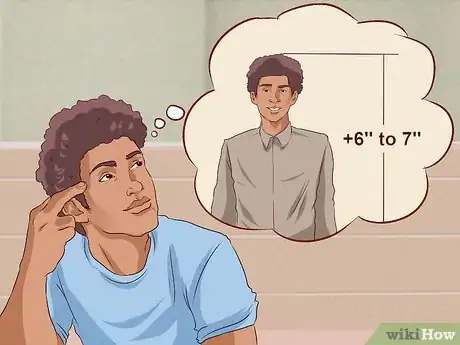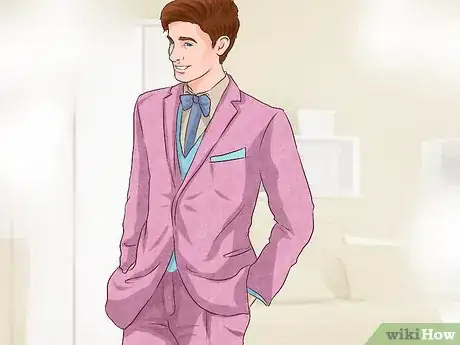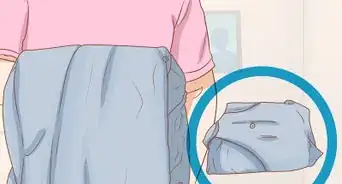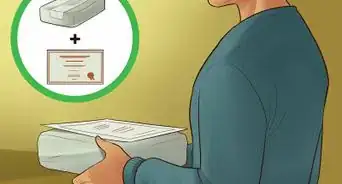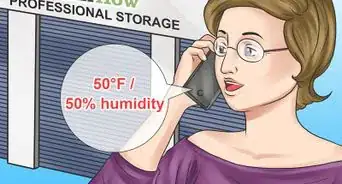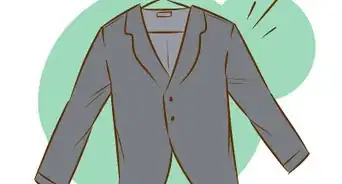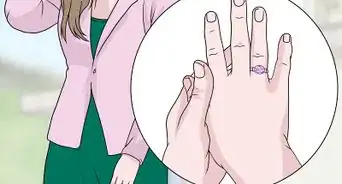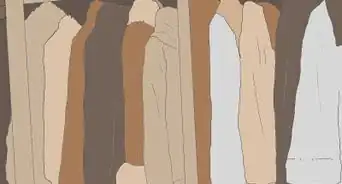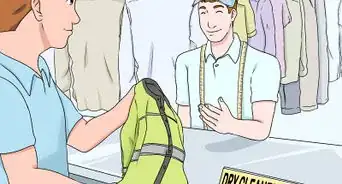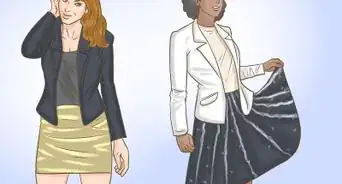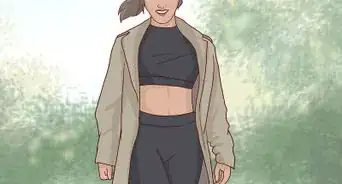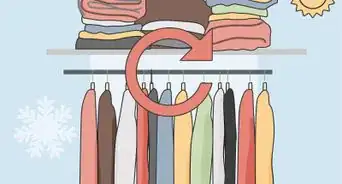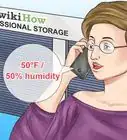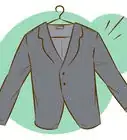This article was co-authored by Paul Julch, MA. Paul Julch is a Personal Wardrobe Stylist, Speaker, and the founder of Urbanite | Suburbanite, a wardrobe styling business in the San Francisco Bay Area. With over 25 years in the fashion industry, Paul works with clients to make getting dressed easier, less time consuming, and more enjoyable. Paul has years of experience in retail visual merchandising - styling windows, displays, and floor sets for Banana Republic, Gap, and Express. He also has experience styling fashion photo shoots and corporate videos. Paul holds a BS Degree in Management from State University of New York at Binghamton, an MA in Clinical Psychology from Long Island University. He also studied Interior Design at the University of California, Berkeley.
There are 14 references cited in this article, which can be found at the bottom of the page.
This article has been viewed 117,579 times.
An overcoat is a traditional part of a working man’s wardrobe. Overcoats are designed to be worn over suits and provide an additional layer to keep you warm while adding to the sophistication of your look. It can be confusing to find the best fit when buying an overcoat, as there are many different types. Some good general guidelines are to choose a style, take accurate upper body measurements and think about what kind of weather you’ll be wearing the overcoat in.
Steps
Taking Your Measurements
-
1Use your basic suit size for reference. If you tend to wear a particular size in business attire, keep these dimensions in mind when shopping for an overcoat. If you’re unsure, visit a professional tailor or buy a fabric measuring tape and find out for yourself. In most cases, your optimal overcoat size will correspond exactly with your suit size, as modern overcoats are sized to fit over a suit jacket or sport coat.[1]
- A size 42 overcoat will not be exactly 42 inches (106.7 cm) around the chest. The sizing number is listed to match your suit size, but will actually be a couple of inches bigger to accommodate the suit underneath.
- If you usually wear a 42S size in a suit, consider having your overcoat sized 42R or even 42L to get the right fit. In general, an overcoat shoulder fits slightly long and loose because its primary purpose is to envelop the body and cover the clothing beneath.
-
2Measure across your chest. Wrap a measuring tape around the thickest part of your chest. For most men, this will be just under the armpits. Let your arms rest at your sides while measuring so that your chest will be fully expanded and in the most natural position. This measurement will tell you how large your overcoat needs to be in the chest.[2]
- It’s usually a good idea to buy one size larger based on chest measurements so that you’ll have ample room to move comfortably in your coat. If your measurement is between sizes, round up.[3]
- Having a friend or loved one lend a hand in the process can help give you a more precise measurement.
Advertisement -
3Measure your arm length. Lay the measuring tape down the side of your arm and measure the distance from shoulder to wrist. Keep your arms bent with your hands on your hips. This will ensure that the sleeve will be long enough not to pull too high when you bend your arms. Overcoat sleeves need to be a very particular length, so finding out the length of your arm span will help you end up with a coat that fits perfectly.[4]
- For overcoats bought off the rack, a chest measurement will probably be all you need. However, if you’re having an overcoat made or altered specifically for your figure, you’ll need to get more detailed measurements of your upper body.
- Overcoat sleeves should be long enough to cover the sleeve of your sportcoat and the cuff of your shirt when worn.[5]
- The sleeve length on an overcoat is really important. If the sleeves are too long or too short, you'll look like you're wearing someone else's clothes.[6]
-
4Keep your height in mind. Know your exact height and be prepared to let a sizing professional know if you take the more expensive tailored route. Overcoats come in several different lengths. Full-length coats are the most traditional and cover the body almost all the way to the ankles. ¾ length coats are a more popular modern fit and tend to come down to around knee level on most men. Decide which style you prefer and how your height will play a factor in sizing the coat.[7]
- If your measurements are somewhat unusual (if, for instance, you’re shorter in stature but have long arms), you may be better off having the garment professionally tailored to ensure a proper fit.
- These days, ¾ overcoats are favored by young professionals and are almost always sized to be slimmer and more fitted.[8]
-
5Try on the overcoat to see how it fits. Whether you're buying a coat off the rack or having one tailored professionally to suit your frame, give it a test run to see how it fits. Put the coat on and move around a little, observing how movement causes the coat to tense and draw up on your body. An overcoat should fit comfortably and loosely over a suit, so if it feels snug in any area above the waist, consider moving up a size.
- If you're planning to wear your overcoat over a blazer or jacket, buy it a little larger. However, be sure it still fits you well, especially in the shoulders—the shoulder seams should be as close as possible to the highest point of your shoulder.[9]
- If you'll mostly be wearing your overcoat over lighter layers, you can opt for a slimmer fit, if you prefer.[10]
- Discuss alterations with a tailor or seamstress, even if you're buying a coat off the rack. An overcoat that is too big can be altered after the fact to better fit your physique. Little can be done to modify a coat that is too small.
- Look for areas with excessive creasing, tension or bunching. This usually signifies an improper fit.[11]
Choosing a Style of Overcoat
-
1Buy an overcoat that is weather appropriate. When choosing an overcoat style and materials, take into consideration the climate where you live. If you live in an area with harsh winters or year-round temperate weather, look for coats made from materials like wool and cashmere, the heavier the better. Lighter weight overcoats made from waxed cotton or twill will be appropriate for autumn evenings or in places that don’t get too cold.[12]
- Winter overcoats should be quite heavy. Many men’s fashion experts recommend a weight of 3-4 pounds for a winter coat to offer optimal insulation from the cold.
- Light, waterproof overcoats can come in handy if you live somewhere that receives a lot of rain.
-
2Browse different designs. Pick an overcoat you like that will complement the type of clothing you ordinarily wear and is suitable for the setting in which it is to be worn. One of the most popular styles is the Chesterfield, a traditional English-style coat that is usually knee-length and often worn in charcoal gray, navy or black. There is also the Polo, a double-breasted cut with large lapels and a belted waist. Lastly, there is the immediately recognizable American style trench coat, a full-length coat constructed of durable canvas and features a loose fit, high collar and epaulets. Any of these styles might potentially be a good fit for you and the look you're trying to create.[13] [14]
- Other common overcoat varieties include Paletot, Ulster and Field Coat styles, which boast different fits and features, many of which are inspired by formal military dress uniforms.
- Chesterfield, Polo or trench coats are the most versatile styles and can be worn with outfits ranging from a sweater and khakis for a night out on the town or formal attire for a business meeting or funeral.
-
3Try out different lengths. Keeping in mind weather conditions and the type of clothing you’ll be wearing with it, pick out a coat length that will work best for you. For style reasons, you may opt for a ¾ length coat, whereas full-length coats will provide better shelter from cold and wind. These aren’t the only options: overcoats are available in many in-between lengths and can be altered depending on your own preferred specifications.[15]
- Certain overcoat styles are associated with particular lengths. For instance, the Chesterfield, Paletot and pea coat are made to fall around the knee, while the Polo, Ulster and trench coat drape over as much of the body’s length as possible.
-
4Settle on a color. After you’ve found the right fit and selected a style and length, you have the option of selecting from different colors. Black, dark gray and navy blue are the classic colorways for formal events and are a safe choice for a general-purpose overcoat. Khaki and light brown shades are often prescribed for more casual garb, while bright and unusual colors should be reserved for informal, social wear only.[16]
- Overcoats can be worn in the same color as the clothing underneath or can be chosen to offset or match garments in different colors. Browns and grays, for example, go well together and can provide a striking contrast for a more dressy getup.
- An overcoat should be worn as a tasteful outer garment. Avoid bright, garish colors or dizzying designs.
Wearing an Overcoat
-
1Add an extra layer for the cold. Choose a long, heavy overcoat for cold weather and bundle up. The primary purpose of an overcoat is to act as a warm outer layer. For this end, materials like wool, cashmere, and fleece will work best. Look for thick fabrics, strong seams and additional features like belts, buttons and high collars you can use to envelope yourself when it gets brisk.[17]
- Overcoats pair well with hats, gloves, scarves and other formal cold weather gear.[18]
- Nicer types like Chesterfields and Polos are ideal for wearing over a suit, which can be difficult to layer effectively in the winter.
-
2Protect yourself from the elements. Another function of overcoats is to create a barrier between you and the outside world. They provide enough coverage to cut down on wind chill, are sturdy enough to protect you from moisture and everyday contact, and act as a membrane to keep your formal items from getting dirty. An overcoat can lend you peace of mind knowing that you and your clothing will remain protected and pristine beneath it.[19]
- If you think your lifestyle might be rough on an overcoat, try out materials like cotton twill, waxed canvas or even leather. These tough fabrics are resistant to wear and tear and are generally easy to clean.
- Safeguard leather overcoats with a protective coating of oil to make them water-resistant.[20]
-
3Achieve a more formal look. Go for an overcoat over a fleece jacket or windbreaker the next time you need to make a good impression. Overcoats are one kind of formal garment that never goes out of style. You’ll look much more suave wearing a well-fitted, sensible overcoat than you would in plain outerwear, or caught unprepared for chilly weather in only a suit.[21]
- Black, charcoal gray and navy blue should be your go-to color choices for formal dress.[22]
- An overcoat can and should be worn in place of inappropriately casual jackets whenever possible.
-
4Stand out. While overcoats have become a less prevalent fashion choice in contemporary times, they are still regarded as the peak of men’s business and formal style. You’ll stand out from the crowd and be taken seriously as a man of refinement once you add a nice overcoat to your coat rack. It’s a good way to inject some classic style into your wardrobe, and you’re sure to turn heads when you walk past a crowd of people all wearing the same thing.
- Go for modern styles and materials and an accentuated fit. Overcoats are marked by a somewhat vintage aesthetic and can look like a novelty if they’re not chosen carefully.
Expert Q&A
Did you know you can get expert answers for this article?
Unlock expert answers by supporting wikiHow
-
QuestionShould you buy a coat a size bigger?
 Paul Julch, MAPaul Julch is a Personal Wardrobe Stylist, Speaker, and the founder of Urbanite | Suburbanite, a wardrobe styling business in the San Francisco Bay Area. With over 25 years in the fashion industry, Paul works with clients to make getting dressed easier, less time consuming, and more enjoyable. Paul has years of experience in retail visual merchandising - styling windows, displays, and floor sets for Banana Republic, Gap, and Express. He also has experience styling fashion photo shoots and corporate videos. Paul holds a BS Degree in Management from State University of New York at Binghamton, an MA in Clinical Psychology from Long Island University. He also studied Interior Design at the University of California, Berkeley.
Paul Julch, MAPaul Julch is a Personal Wardrobe Stylist, Speaker, and the founder of Urbanite | Suburbanite, a wardrobe styling business in the San Francisco Bay Area. With over 25 years in the fashion industry, Paul works with clients to make getting dressed easier, less time consuming, and more enjoyable. Paul has years of experience in retail visual merchandising - styling windows, displays, and floor sets for Banana Republic, Gap, and Express. He also has experience styling fashion photo shoots and corporate videos. Paul holds a BS Degree in Management from State University of New York at Binghamton, an MA in Clinical Psychology from Long Island University. He also studied Interior Design at the University of California, Berkeley.
Personal Wardrobe Stylist & Speaker
-
QuestionI wear a 42S suit size. What overcoat size should I buy?
 Community AnswerThe same: either a 42S or 42R. Most overcoats are pre-measured to fit over a suit, so shop for the same size you normally wear.
Community AnswerThe same: either a 42S or 42R. Most overcoats are pre-measured to fit over a suit, so shop for the same size you normally wear. -
QuestionI wear a size 42 regular in suit coats and 36 in pants, what size overcoat would I need?
 Community AnswerYou would likely need a large or XL depending on the brand's cut, etc. I would suggest trying the clothes on or ordering from a provider who allows free returns.
Community AnswerYou would likely need a large or XL depending on the brand's cut, etc. I would suggest trying the clothes on or ordering from a provider who allows free returns.
Warnings
- It's better to go a little too large than a little too small when sizing an overcoat. Larger overcoats can be taken in, but there's little you can do for a coat that's too snug.⧼thumbs_response⧽
- Keep wool and leather overcoats out of the rain, unless you're wearing leather that has been specially treated.⧼thumbs_response⧽
Things You'll Need
- Fabric measuring tape
- Pencil
- Paper
- Suit (for size reference)
References
- ↑ http://www.realmenrealstyle.com/how-buy-overcoat-guide/
- ↑ http://www.dummies.com/how-to/content/how-to-get-your-body-measurements.html
- ↑ http://www.thehogtownrake.com/?p=259
- ↑ https://www.youtube.com/watch?v=6qHZNR6if1Y
- ↑ http://www.artofmanliness.com/2012/12/11/mans-guide-overcoats/
- ↑ Paul Julch, MA. Personal Wardrobe Stylist & Speaker. Expert Interview. 17 September 2020.
- ↑ http://atailoredsuit.com/Mens-Jacket-Overcoat-Measurement-Guide.pdf
- ↑ http://www.mensfitness.com/styleandgrooming/fashion/how-should-mans-overcoat-fit
- ↑ Paul Julch, MA. Personal Wardrobe Stylist & Speaker. Expert Interview. 17 September 2020.
- ↑ Paul Julch, MA. Personal Wardrobe Stylist & Speaker. Expert Interview. 17 September 2020.
- ↑ http://ashleyweston.com/mens-clothing-fit-guide/how-should-an-overcoat-or-peacoat-fit/
- ↑ http://www.mensfitness.com/styleandgrooming/fashion/how-should-mans-overcoat-fit
- ↑ http://www.artofmanliness.com/2012/12/11/mans-guide-overcoats/
- ↑ http://www.realmenrealstyle.com/how-buy-overcoat-guide/
- ↑ http://www.realmenrealstyle.com/mens-overcoat-length-how-long-should-your-over-coat-be-male-style-fashion-advice/
- ↑ http://www.realmenrealstyle.com/how-buy-overcoat-guide/
- ↑ http://www.artofmanliness.com/2012/12/11/mans-guide-overcoats/
- ↑ http://www.ties.com/blog/gentlemans-guide-winter-suits
- ↑ https://www.gentlemansgazette.com/trench-coat-guide/
- ↑ http://www.leathertherapy.com/pages/Waterproofing-Leather-.html
- ↑ http://www.artofmanliness.com/2012/12/11/mans-guide-overcoats/
- ↑ http://www.realmenrealstyle.com/nine-suit-colors/




